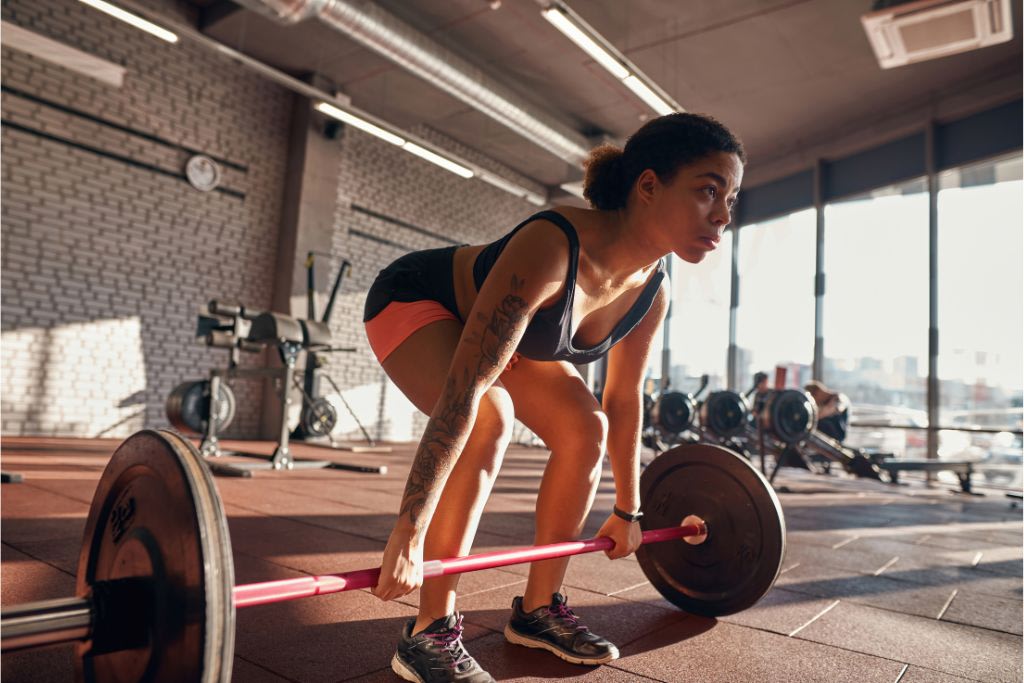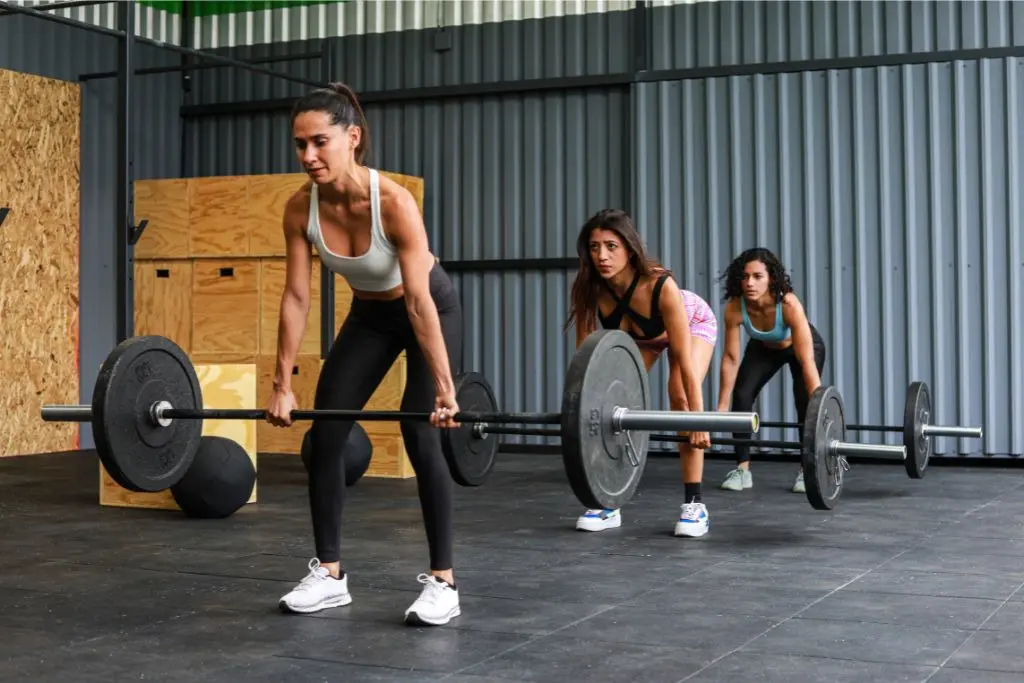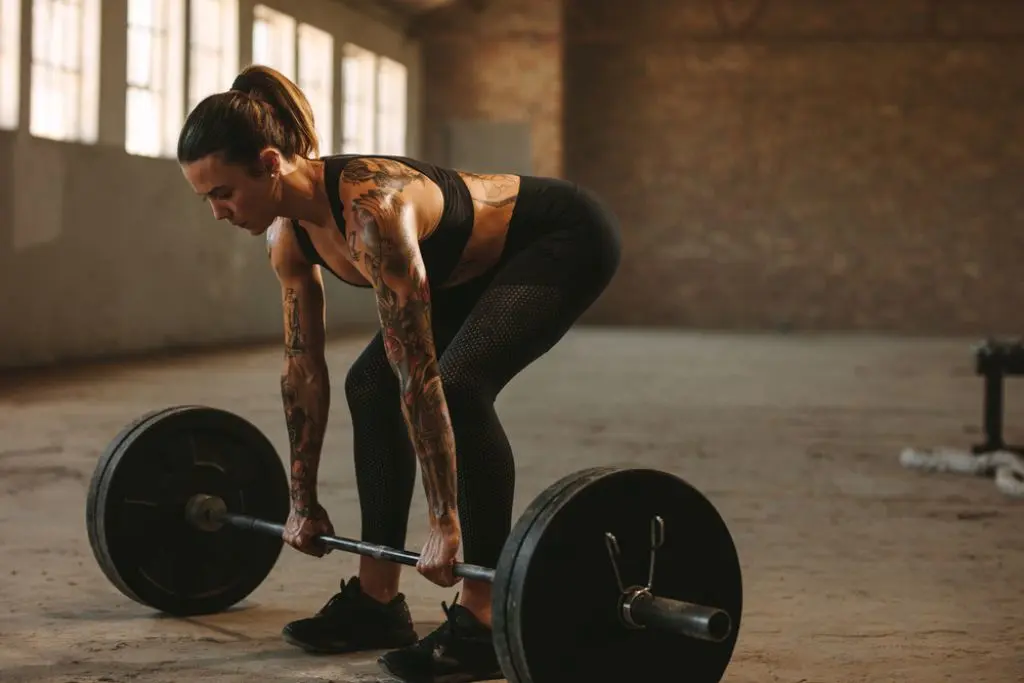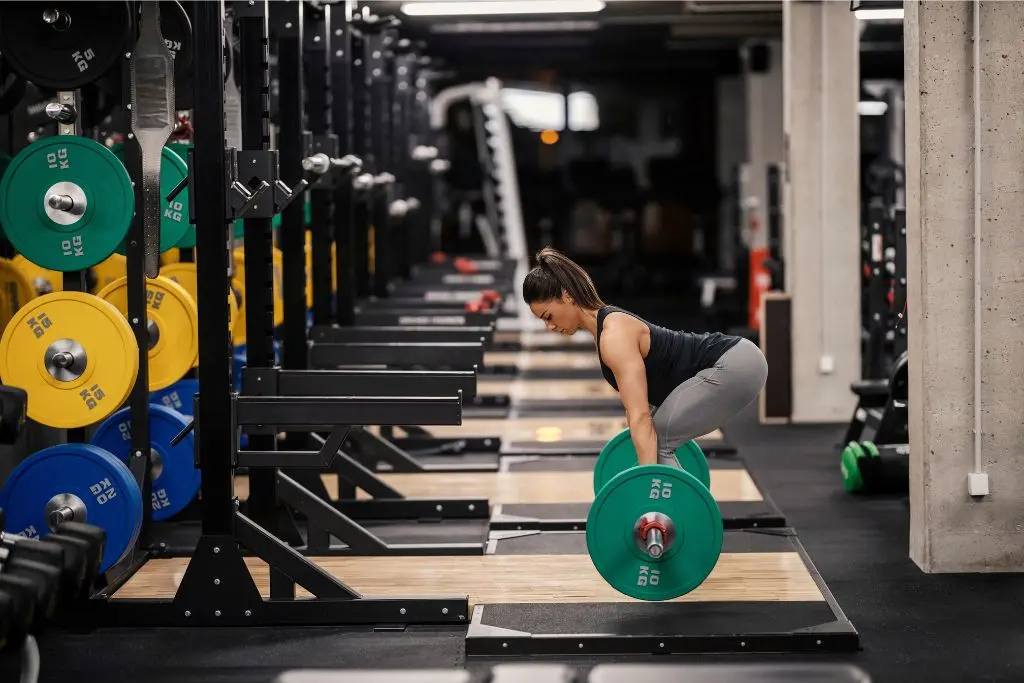Lower Back Pain After Deadlifts? This Is For You

November 2, 2023

Whether you’re a strength training beginner or an experienced lifter, deadlifts are often a fundamental exercise in your fitness routine. Deadlifts mimic many real-life movements and are an incredible compound exercise, meaning they work several major muscle groups at once. And because they use some of the largest muscles in the body, there is plenty of room for progression with your weights.
There’s so much to love about deadlifts, but the key is to learn the correct lifting technique, especially when you start to challenge yourself with your weight selection. The last thing you want is to wake up with lower back pain post-workout.
We want you to love deadlifting as much as we do, so here’s what you need to know to make sure this exercise is working your lower body, rather than your lower back.
Are deadlifts bad for your back?
When done correctly and with proper weight selection (choose weights that feels challenging but achievable), deadlifts shouldn’t cause back injuries or severe pain, and can actually help prevent back pain by strengthening your entire posterior chain - that’s the muscles down the back side of your body.
Getting your form and weight selection right is essential. If you’re performing deadlifts with poor form or lifting too heavy for your current strength level, deadlifts can become your back’s worst nightmare by causing excessive strain or asking too much of your body’s smaller stabiliser muscles.

Red flags with lower back pain after deadlifts
Secondly, it’s important to recognise the difference between typical post-workout muscle soreness (aka DOMS), signs of poor technique, and symptoms of something more serious such as a herniated disc.
If you’re new to deadlifts or have recently increased your weights and the pain feels similar to usual post-workout aches, it’s probably nothing to worry about and it should improve with rest. If your lower back pain is sharp or making it hard to move, there’s a high chance your technique needs some work. It’s also worth seeing a specialist if the pain doesn’t improve within a few days. If your pain is severe or accompanied by any of the following symptoms, seek medical attention as soon as possible.
Headaches or blurred vision
Shooting pain down one or both legs
Difficulty moving without pain in your everyday life
Difficulty controlling your bladder or bowels
Changes in general sensation around your lower back, glutes or legs
Master your deadlift technique: 10 things to remember
Deadlifts are one of the most powerful exercises you can do, and getting the most out of them starts with learning proper form. These 10 tips will make sure the work stays out of your lower back.
Warm up and cool down
If your body is feeling stiff and your muscles aren’t properly warmed up, executing a deadlift correctly can be difficult. Prioritise a good warm-up before any lifting session (whether you’re doing deadlifts or not!) to gradually increase your heart rate and prepare your muscles for the work to come.
Five to 10 minutes of low-intensity cardio is a great warm-up option, as is dynamic stretching and muscle activation exercises that target your hamstrings, glutes and quads such as banded crab walks, clam shells and glute bridges. All Sweat workouts start with an optional guided workout, and many include muscle activation work, too.
It can also help to include a deadlift warm-up set, where you complete a series of reps at a low weight before your working sets begin. When you’ve finished your workout, wrap it up with a gentle cool-down.
Imagine a metal bar in your back
At every stage of your deadlift, it can help to envision a metal bar down the middle of your back to prevent it from rounding or arching. Letting your back arch in either direction can transfer the force of the lift to your lower back. Maintaining a neutral spine also means that when you come to the top of the lift, you squeeze your glutes without thrusting your hips forward and bending your back. Strong back, strong deadlift.

Bend your knees
Bent back? No. Bent legs? Yes! If you reach down to pick up something heavy with straight legs, you’re instantly reducing the power available in your legs and shifting your centre of gravity, thus transferring the effort to your back and increasing your chance of an injury.
Push through the floor
At first glance, a deadlift can look like a pulling exercise where you use your arms to lift the weight. Wrong. This is another recipe for injury. Once you’re in position and ready to begin, instead of thinking about pulling up, think about pushing down through the floor with your lower body. This will help to generate as much power as possible through your legs and glutes.
Keep the bar close to your body
The barbell should start close to your legs, positioned roughly above your shoelaces or midfoot, and it should stay close to your legs throughout every stage of the lift. There’s a reason some people wear shin guards for deadlifts! If you let the bar swing out away from your body, the movement instantly becomes unstable and the pressure can shift to your back. If the bar is almost grazing your shins, don’t let that scare you - you’re doing it right.
Brace your core
A significant part of protecting your back in any movement is engaging your core and a deadlift is no different. As you hold the barbell, engage your abdominal muscles as if you were bracing for a punch. If your core muscles are disengaged, you leave your back unsupported.
Move as one
Instead of thinking your deadlifts are a two-part movement where your torso lifts first, followed by your legs straightening, you want your legs, hips and torso moving all at once. Focusing on moving as one will avoid straining your back and increase muscle engagement in your lower body.

Avoid the bounce
You may have seen people in the gym or on social media performing deadlifts and bouncing the weight on the ground between each rep. It might look like an efficient strategy to get the bar off the ground, but you’re seriously risking your back by doing so. While the bounce might get the weight off the floor with less effort, you’re cheating yourself of the work and it can strain your back on the rebound.
After each rep, let the bar come to a stop and brace for the next rep. If you can’t complete another rep without the bounce, you’re lifting too heavy.
Prioritise form over weight
Speaking of lifting too heavy, form should always come first. If you’re not sure how your form is looking, use a mirror, film yourself, work out with a friend, or ask a gym staff member to help you out.
It’s also important to remember that even if you’re making good progress on your strength training journey and logging your weights, building strength isn’t always a linear journey. Not every workout will involve new personal bests and sometimes you might have to lower your weights, especially as changes during your menstrual cycle can affect your athletic performance. Don’t feel like it’s a setback if you need to opt for lighter weights sometimes.
Progress gradually
Finally, have patience, take it slow with your weight progression and make sure you’re letting your body rest enough between each workout. If you’re starting your deadlifting journey with an empty barbell (a great place to begin), your next step could be to add five kilograms to the bar, not 20. The weight-logging feature in the Sweat app is a great way to keep track and level up gradually. Even as you start to lift heavier, you should continue to increase your weights in small increments.
Ready to start your deadlifting journey and see what you’re really capable of? Sweat has plenty of strength training programs available with helpful video tutorials and weight-logging options, whether you’re best friends with a barbell or introducing yourself for the first time.

A more empowered you starts with Sweat, and our editorial team is here to bring you the latest fitness tips, trainer recommendations, wellbeing news, nutritional advice, nourishing recipes and free workouts.
* Disclaimer: This blog post is not intended to replace the advice of a medical professional. The above information should not be used to diagnose, treat, or prevent any disease or medical condition. Please consult your doctor before making any changes to your diet, sleep methods, daily activity, or fitness routine. Sweat assumes no responsibility for any personal injury or damage sustained by any recommendations, opinions, or advice given in this article.
Wellbeing